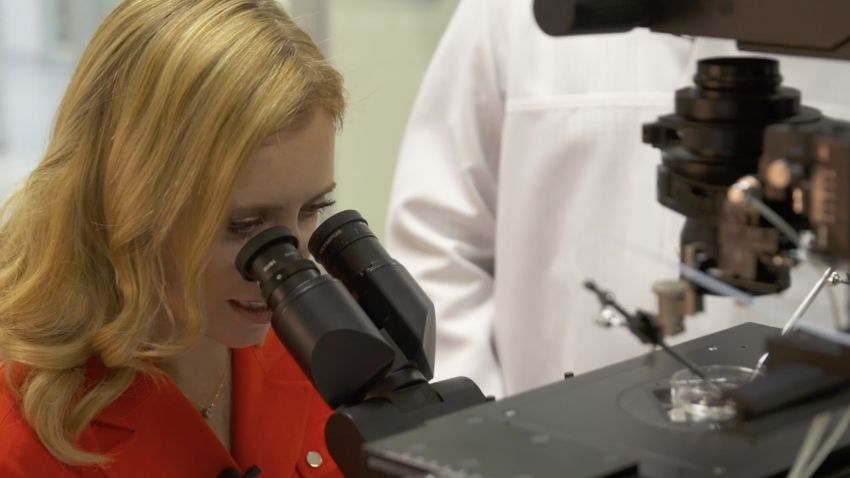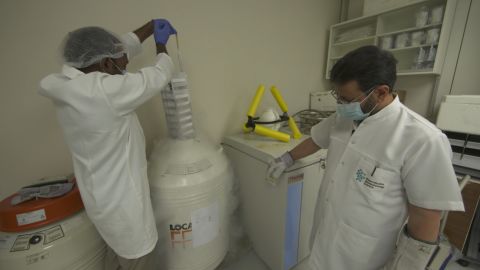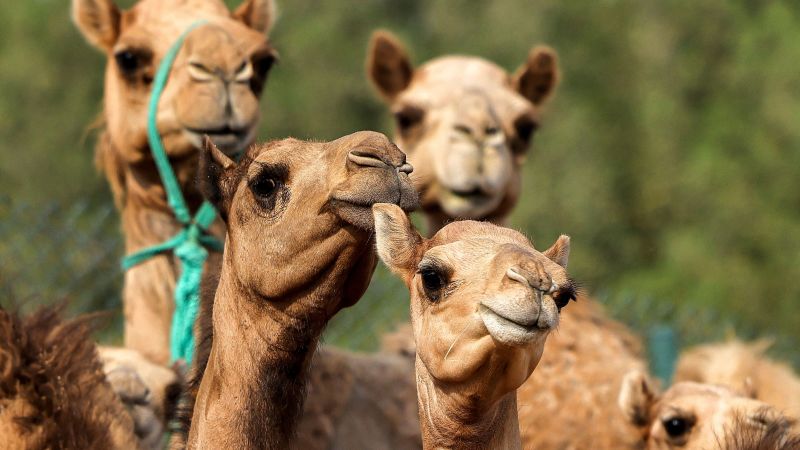Editor’s Note: This CNN Travel series is, or was, sponsored by the country it highlights. CNN retains full editorial control over subject matter, reporting and frequency of the articles and videos within the sponsorship, in compliance with our policy.
CNN
—
When Nisar Ahmad Wani succeeded in carrying out the world’s first camel cloning in 2009, it was hailed as a great achievement. Today, Wani is scientific director at the Reproductive Biotechnology Centre, in Dubai, and the practice is so popular that cloning has become his nine-to-five job.
Wani and his team research and develop new cloning techniques and maintain cell banks, allowing them to make copies of animals including buffalo and sheep. But the center’s focus is on cloning camels.
Each year, it produces dozens of cloned dromedary camel calves. Among the most popular are copies of camel “beauty queens,” with the right combination of drooping lips and long necks.
Camel beauty pageants are popular in the Gulf states and prize money runs into the tens of mil-lions of dollars at some events. Owners have been disqualified in the past for using banned tech-niques such as injecting camels with silicone and fillers, and inflating body parts using rubber bands to enhance their appearance. But as far as these competitions are concerned, cloned camels are perfectly legitimate.
Though the Reproductive Biotechnology Centre declined to share its prices, according to reports in the local press, making an exact copy of your prettiest camel could set you back around 200,000 dirhams, or a little over $50,000.
Other than beauty queens, Wani and his team have also been reproducing elite racing champions to compete in the UAE’s many camel races (some of which are jockeyed by robots and can earn the winners thousands of dollars in prize money), as well as camels genetically altered to produce proteins in their milk that can be used for pharmaceutical applications. They have also been able to present bereaved camel owners with a replica of their deceased pet – cell samples can even be taken shortly after the death of the animal.
Wani works with a process that uses DNA from “somatic” (or non-reproductive) cells taken from the donor animal being cloned. The nucleus from these donor cells is introduced into an egg and activated by chemicals.
“The DNA from the somatic cell starts behaving like the DNA of an embryo,” Wani tells CNN. “Once activated, they are cultured in a lab for seven to eight days before being transferred to the uterus of a surrogate mother.
“The baby produced has all the genes from a donor animal.”
According to Wani, the process is delicate and temperamental, with success rates for cloned pregnancies at just 10%, compared to 60% of natural camel pregnancies that are carried to term.
It might seem a lot of trouble to go to for a camel, but the animals are an important part of life in Dubai. In addition to featuring in pageants and races, historically these single-hump dromedaries have been used for transport across the harsh deserts of the Arabian Peninsula, as well as a source of meat and milk. But they are also a cultural symbol of the traditional Emirati way of life.
“Camels were an essential element to ensuring life was possible in the Arabian Peninsula prior to the era of oil and gas,” says Obaid Al Falasi, the co-founder of the Arabian Desert Camel Riding Center, Dubai’s first camel riding school. “Traveling and trade between countries and settlements was facilitated by camels, who had the ability to endure the rough climate and survive on very little feed and water.”
The camels, he adds, were the people’s treasure and companion, and that is still the case today for certain Emirati tribes and families. For many, they hold spiritual significance as well. “Camels are mentioned in the Quran and described many times as unique compared to other animals, with abilities given by God – like survival without water and food,” Al Falasi says.
Despite their status, he says that camel cloning isn’t considered sacrilegious. “Cloning is a scientific achievement in its own and should be considered as such,” he explains.

The science behind genetic engineering
Dubai’s Camel Breeding Center and its Camel Reproduction Center also produce elite camels, but rather than cloning, those two labs focus on embryo transfer, where an embryo is harvested from one female and implanted in a different camel to improve the chances and rate of reproduction.
Al Falasi says that cloning is too expensive for most people and that embryo transfer is more common, “to ensure that a good camel can produce more offspring [through surrogacy], instead of every year or two.”
Now, Wani and his team are looking to use the technology to help endangered species.
The two-humped wild Bactrian camel is among the most endangered large mammals on the planet, threatened by habitat loss and interbreeding with domestic camels. To help preserve wild Bactrian camels, Wani and his team are working on techniques that involve interspecies somatic cell nuclear transfer, where a closely related domestic animal species is used as the egg donor as well as surrogate mother to carry the cloned embryos to term.

In 2017 the first cloned Bactrian camel was born at the center using this method, after an embryo was implanted into a dromedary camel.
In the future, Wani hopes to employ the cloning technique to preserve other critically endangered animal species and even help to restore extinct species.
“Our center is focused on developing and applying the latest reproductive biotechnology techniques like cloning, IVF, artificial insemination and embryo transfer to enhance the multiplication of different animal species of the region and also for the conservation of endangered species,” says Wani.

